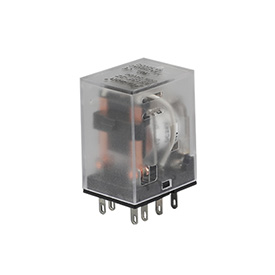What is the difference between a signal relay and a power relay
What is the difference between a signal relay and a power relay? First let's understand what a relay is? Relays are commonly used in automatic control systems to turn on and off circuits, to issue control commands and to reflect the status of equipment to form automatic and remote control circuits. Relays are used in all areas of automatic control. It plays an important role either as a core component of relay-based signaling systems or as an interface component of electronic or computer-based signaling systems. The reliability of a relay's operation has a direct impact on the reliability and safety of the signaling system.
Signal relays are used more often in secondary protection circuitry. It will tell the relevant personnel exactly which protection is out of order. The principle is to receive the inrush current from the inrush relay and act so that the light sign or buzzer or electric bell will ring. Signal relays are generally used for monitoring and protection, and are also used more in the secondary protection circuit of distribution high voltage cabinets.
The power relay, on the other hand, is a device that can produce a jump in one or more electrical output circuits when the input quantity (or excitation quantity) meets certain specified conditions. It can be used in neutral point direct grounding systems as a directional element for zero sequence current protection. A power relay is somewhat similar to a judgment statement in mathematics. When a constant is entered, different results are output when the condition is met and when the condition is not met. A power relay is also one that can produce a jump in one or more electrical output circuits when the input quantity meets certain specified conditions.
In short, a current over 2A is used as a power relay, while one below 2A can be considered a signal relay, depending on the specific application.
 中文
中文 Русский
Русский Español
Español


